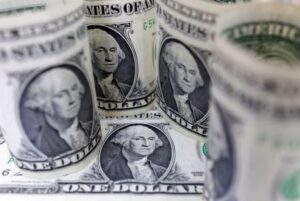By Ahmad Ghaddar, Trixie Yap and Shariq Khan
LONDON/SINGAPORE/NEW YORK (Reuters) – Profit margins for diesel are slumping as new refineries boost supplies and as mild weather in the northern hemisphere and slow economic activity eat into demand, putting oil prices under further downward pressure.
The lower refining margins for diesel, one of the world’s key industrial and transport fuels, have already prompted some refiners in Asia to trim the volume of crude oil they process to reduce their diesel output.
Weaker demand has seen crude oil prices fall sharply in recent weeks and OPEC+ producers meet in early June to decide on the fate of a series of supply cuts agreed since late 2022.
While the group is yet to begin formal discussions, sources told Reuters the group may keep cuts of 2.2 million barrels per day (bpd) beyond June if demand fails to pick up.
Brent crude prices slumped to a two-month low of below $82 a barrel on May 8 on rising inventories and slipping demand. They recovered some losses on Thursday, but are on track to lose over 4% so far this month after four months of gains.
“[OPEC+] would … need to contend with the mixed performance in refined product markets — gasoline crack spreads have improved steadily, but diesel cracks have markedly deteriorated,” JP Morgan said, adding that it expected the alliance to keep production cuts beyond June.
European diesel profit margins slid to below $16 per barrel in late April, an 11-month low having hit over $40 in February.
The difference between U.S. diesel and crude oil, known as a crack spread, eased to a 2-year low of $20 in April at the main trading hubs in New York and the Gulf Coast from above $40 a barrel in February, according to a Commodity Context analysis.
Asian diesel margins averaged $17 a barrel in April, down from $22 in the first quarter.
RISING OUTPUT, WEAKER DEMAND
Analysts say that a mild winter hit diesel demand over the last two quarters, as it meant less buying of heating oil.
Rising output is also weighing on prices. Global refining capacity rose by 2 bpd last year, the most since 1977, energy brokerage StoneX said, as new projects were launched in Oman, Kuwait and Nigeria.
Refiners will add another 200,000 bpd of diesel capacity this year, StoneX said.
In Europe, where diesel is used more in cars than elsewhere, the shift to hybrid or electric cars is also eating into demand.
JP Morgan noted that road diesel demand in the continent contracted by 50,000 bpd over the past year.
In the U.S., a different kind of structural change is underway, with a rising volume of biofuels displacing diesel.
U.S. West Coast demand for petroleum-derived diesel hit its lowest in nearly 28 years in January, while consumption of renewable diesel and biodiesel hit a record high, according to U.S. government data.
Meanwhile slowing factory activity last month in China, the Euro zone and the United States has dragged on diesel demand.
“Now that peak heating season is over the issue is more related to general industrial slowdown … and to the car fleet slowly moving away from diesel,” Natalia Losada, an analyst at consultancy Energy Aspects, said.
European and U.S. diesel futures markets have been trading in contango since around mid-April – where a current contract trades at a discount to a contract for a later date – a sign of oversupply and a signal for traders to store the fuel for better profit later. On May 3, the 6-month European diesel spread reached nearly $12 a tonne in contango, its widest in a year.
While the diesel market is in contango, the crude market is not. Benchmark Brent crude is in backwardation, the opposite of contango, and therefore still signalling market tightness.
“It is likely that the current front-end strength in crude curves, reflecting a current tight crude market, will dissipate in not too long due to likely lower refinery runs,” SEB analyst Bjarne Schieldrop said.
Refining margins in Asia are stuck near one-year lows.
Taiwan’s Formosa Petrochemical Corp, one of Asia’s largest refined products exporters, cut its May run rate by about 3 percentage points.
South Korea’s second-largest refiner, GS Caltex, is trimming output by 20,000-30,000 bpd in May, trade sources said.
SUPPORT FROM CHINA, JET FUEL
Some support for the Asian diesel market could come from declines in exports from China in April and May due to refinery maintenance, two Singapore-based trade sources said.
Bank of America analysts said support could also come from surging air traffic raising demand for jet fuel, which could prompt refiners to produce more aviation fuel and less diesel.
(Additional reporting by Robert Harvey; Editing by Dmitry Zhdannikov, Simon Webb and Elaine Hardcastle)





